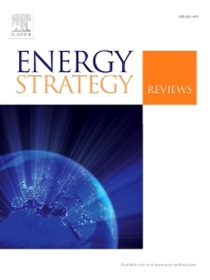全球能源弹性量化及其碳减排效应:技术创新的作用
IF 7.9
2区 工程技术
Q1 ENERGY & FUELS
引用次数: 0
摘要
本研究利用2000 - 2021年全球160个国家的样本,首先从能源供应弹性、能源消费弹性、能源安全弹性和能源脆弱性弹性四个维度确定了能源弹性的时空特征。以及它对碳排放(CO2)的潜在影响。我们发现能量弹性对二氧化碳的负影响。本研究使用世界银行对全球各国收入水平的分类,将样本内的国家分为四组。结果表明,国家和地区的经济增长程度与能源弹性对CO2的影响程度直接相关。此外,中介分析揭示了技术创新对影响CO2的能源弹性的重要影响。该研究为全球二氧化碳减排提供了重要的参考依据,并从能源弹性的角度为应对气候变化提供了新的思路和方法。本文章由计算机程序翻译,如有差异,请以英文原文为准。
Quantifying global energy resilience and its carbon reduction effect: The role of technological innovation
By utilizing a global sample of 160 countries from 2000 to 2021, this study first identifies the spatial-temporal characteristics of energy resilience from four dimensions: energy supply resilience, energy consumption resilience, energy security resilience, and energy vulnerability resilience. And its potential effect on carbon emissions (CO2). We find the negative impact of energy resilience on CO2. This study uses the World Bank's classification of income levels of countries globally to categorize the countries within the sample into four groups. The results indicate that the degree of economic growth among the countries and regions directly correlates with how much energy resilience affects CO2. In addition, the mediation analysis reveals the crucial influence of technological innovation on energy resilience affecting CO2. The study provides an essential reference basis for global CO2 reduction and offers new ideas and methods for coping with climate change from the perspective of energy resilience.
求助全文
通过发布文献求助,成功后即可免费获取论文全文。
去求助
来源期刊

Energy Strategy Reviews
Energy-Energy (miscellaneous)
CiteScore
12.80
自引率
4.90%
发文量
167
审稿时长
40 weeks
期刊介绍:
Energy Strategy Reviews is a gold open access journal that provides authoritative content on strategic decision-making and vision-sharing related to society''s energy needs.
Energy Strategy Reviews publishes:
• Analyses
• Methodologies
• Case Studies
• Reviews
And by invitation:
• Report Reviews
• Viewpoints
 求助内容:
求助内容: 应助结果提醒方式:
应助结果提醒方式:


